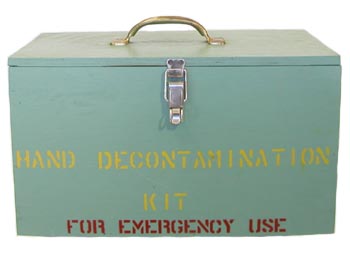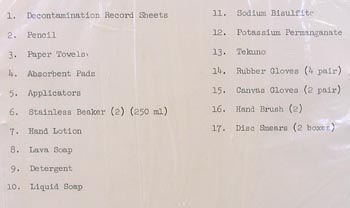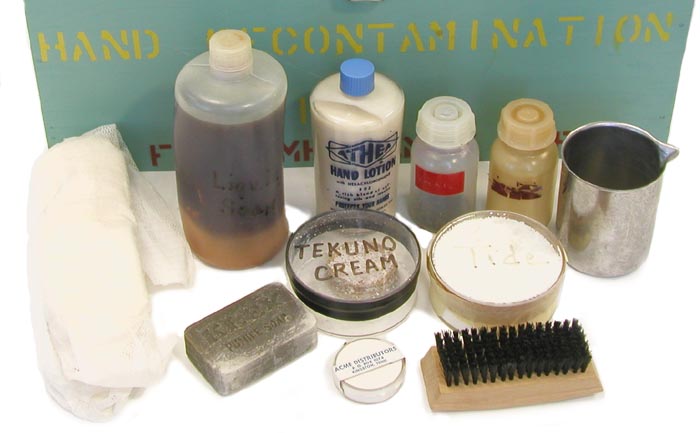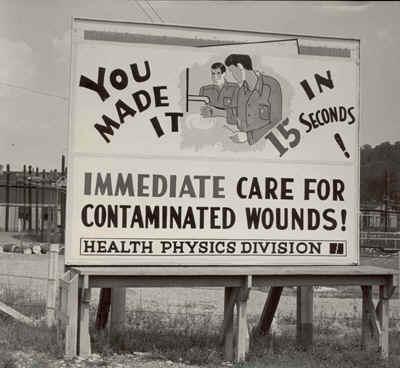Hand Decontamination Kit from ORNL (1970s, 1980s)
This hand decontamination kit, housed in a wooden box (10 1/2" x 18 1/2" x 10"), was used at Oak Ridge National Laboratory (ORNL) during the 1970s and early 1980s.


This listing of the kit contents is taped to the inside of the lid.

The pictured contents, from left to right along the back row, are: an absorbent pad, liquid soap, hand lotion, potassium permanganate, sodium bisufite, and a stainless steel (so it won't break) beaker. In the middle front of the photo is a bar of Klex Pumice Soap, Tekuno cream, a container of Tide detergent, a small container of disk smears, and a soft bristle brush. The photo does not show the following items also found in the kit: notebook for record keeping, pencil, paper towels, as well as additional brushes, absorbent pads, and hand cream. The rubber gloves, canvas gloves, and applicators that were supposed to be in the kit were missing. The absorbent pads are actually feminine napkins. Since some of the workers at the lab were a little embarrassed about that, the pads were known as "atomic wipes."

Safety billboard at ORNL ca. 1945-1950.
Generally, the initial decontamination of hands would be a simple washing with mild soap and water. The next step might be to wash as before and scrub gently with a soft bristled brush so as not to damage the skin. If that failed, a mild detergent might be used, Tide in this case. Sometimes the detergent was mixed with cornmeal and made into a paste with water. If necessary, a mildly abrasive soap (e.g., pumice soap) would be used. Finally the outer layer of skin might be removed with a 4% solution of potassium permanganate. The purple stain from the permanganate would be removed with 4% sodium bisulfite. After each step, the hands would monitored for activity, i.e., wash, monitor, wash, monitor etc. I am unsure about the purpose of the Tekuno Cream in the kit.
Donated by Oak Ridge National Laboratory courtesy of Bill Alexander.
